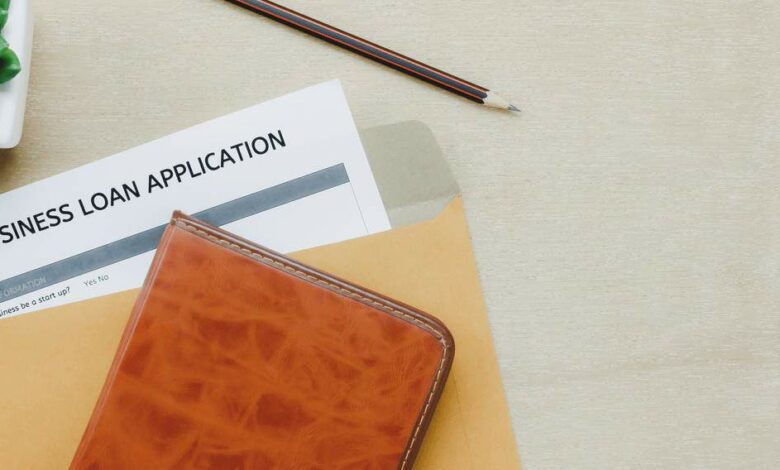How to Calculate the ROI on a Small Business Loan

Any small business that wants to scale needs to leverage financing. Financing can be a powerful tool to take your business to the next level.
But not all small business loans are created equal. Before you make an agreement with a bank or an online lender that uses automated loan origination software, you need to assess whether the loan will yield a positive return on investment (ROI).
What is ROI?
Essentially, ROI determines how profitable an investment will be. It measures the net profit against the investment cost in the form of a ratio:
Net Profit / Investment Cost
To get the ROI percentage, simply turn this ratio into a percentage by multiplying it by 100:
Net Profit / Investment Cost x 100 = ROI
You can apply this formula to all sorts of investments to determine how good they are.
What is Business Financing?
Before you calculate the ROI on a small business loan, let’s clarify what business financing even is.
In business, financing refers to loans you use to pay for any of the following:
- New equipment
- Better software
- More staff
- New market launches
- More inventory
- Better marketing
- Renovations and repairs
And the list goes on … Ultimately, anything that helps your business grow in the long run can be financed through a business loan.
Why Measure the ROI of Business Financing
Measuring the ROI on a small business loan lets you know what you stand to gain from the loan in the long run. For example, a 30% ROI beats the average stock market returns.
But calculating ROI also helps you mitigate risk. Think of a business loan as an investment. As with any investment, it comes with financial risks. Your business could perform poorer than you expected, or maybe it’s impacted by unforeseen economic or environmental disasters—all of which could cause you to default on the loan and even go out of business.
Calculating the ROI of the loan is the first step to mitigating these risks. After all, there’s no point in taking out a loan if it won’t help move your company forward anyway.
The ROI of a loan also helps you determine your risk tolerance. The higher the expected return, the more risk you can afford.
Think of it this way: If the expected return on investment is only marginal, then maybe taking out the loan isn’t worth the risk of it going sour. However, if the expected return is high, you’ll probably still make a profit even if the investment doesn’t go as planned because you have more buffer to work with.
How to Measure the ROI on a Small Business Loan
Now that you know why measuring the ROI on a small business loan is important, let’s go over exactly how to do it:
Calculate the Cost of Financing
To measure the ROI on a small business loan, you first need to calculate the cost of financing. This means adding up the loan principal, interest, and any lender fees.
For example, if the loan is for $10,000 with an annual percentage rate (APR) of 10% over 5 years, the interest will amount to $2,748.23.
If you add a loan origination fee of 1% that amounts to $100 and a documentation fee of $500, you’re adding another $600.
All together then, the cost of the business loan totals $13,348.23 ($10,000 in principal + $2,748.23 in interest + $600 in fees). We recommend using a business loan calculator to do this step faster.
Calculate the Net Profit of Financing
Next, determine the net profit that a business loan will yield. To do this, follow this formula:
Net profit = total sales – investment cost
So if the business loan allows you to make $15,000 in sales, your net profit would be $1,651.77 ($15,000 in sales – $13,348.23 in investment cost = $1,651.77).
Of course, projecting how many sales a business loan will generate is difficult, especially if the financing is used across different areas in your business.
But go with your best estimate. The more accurate your estimate, the more accurate the final ROI percentage will be.
Run the ROI formula
Now that you have the true cost of the business loan as well as the net profit it will generate, you’re ready to calculate the ROI.
Remember: ROI = Net Profit / Investment Cost x 100.
So in our example, the ROI is calculated as the following: $1,651.77 / $13,348.23 x 100 = 12.37.
That means the ROI of the business loan is 12.37%.
What Is a Good ROI for a Small Business Loan?
Now, you may still wonder whether 12.37% is a good ROI or not. The truth is that it depends. A good ROI varies by company, industry, and other factors.
Obviously, the higher the ROI, the better. Many businesses aim for 15 to 30% or higher. But for an entrepreneur, anything over 0% could be a great return.
The key question to ask yourself is whether the business loan will help move your business forward. If it will, there’s a good chance that the loan is a good investment.
Final Tips
Well, there you have it! Now you know how to assess a small business loan based on its ROI. This is an essential skill for any business owner to have.
Some other things you can consider when shopping for business loans is the type of loan. There are short-term loans, microloans, SMB loans, equity loans, and even credit card loans.
Just remember to stay fiscally responsible and avoid overleveraging your financial position. And when you do make a positive return on a business loan, try to reinvest the profit back into your business. That way, you can keep leveraging your way up.
If you do it right, you’ll eventually scale your business to new heights you never before thought possible.



